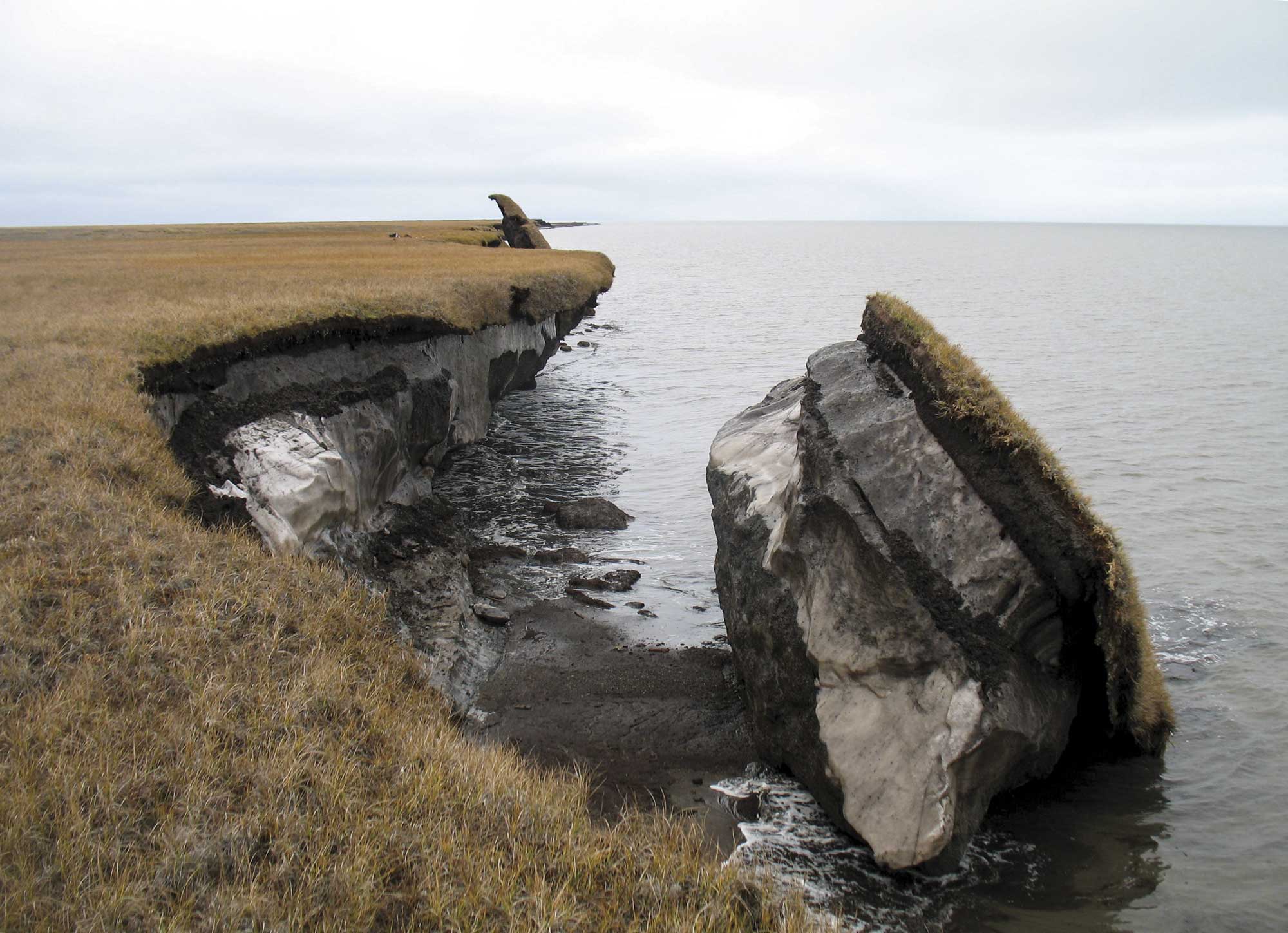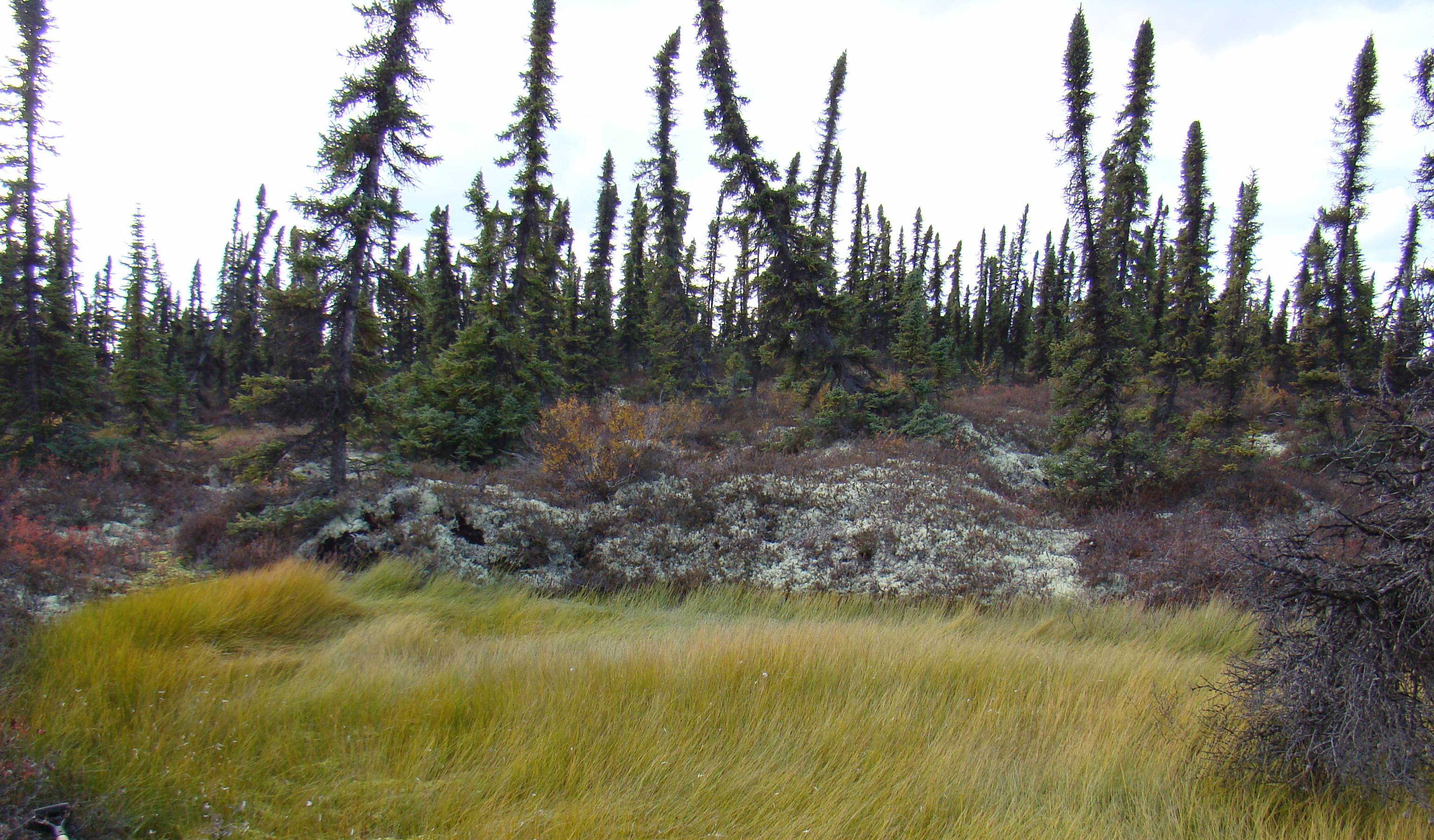Permafrost
Permafrost, the frozen ground seen around the poles, is under threat because of climate change.
What is permafrost?
Permafrost is ground that is frozen for more than two years in a row.
Ground above the permafrost can freeze and thaw every year as the seasons change and is called the ‘active layer’. This active layer can be anywhere between a few centimetres up to several metres thick depending on temperature, snow and the type of soil.
Permafrost tends to occur where the mean annual temperature is below freezing. Most permafrost is found in areas around the Arctic, including Siberia, Canada, Alaska and Greenland. It can also be found in high altitude areas such as the Tibetan plateau, and in parts of Antarctica that are not covered by glaciers. Permafrost can also be found at the bottom of the sea around the Arctic. This subsea permafrost formed on land, before ending up underwater following sea level rise after the last Ice Age.

This section of collapsed coastline in Alaska shows the exposed permafrost with ice lenses. The active layer above it is topped by grass. Credit: U.S. Geological Survey
Permafrost thawing
Permafrost thawing as the climate warms is an important impact of climate change. Increases in permafrost temperature over recent decades have been observed around the world. Thawing of permafrost is commonly seen in areas where permafrost is not continuous.
As permafrost thaws, the active layer becomes deeper, exposing more previously frozen material to above-zero temperatures. This is happening already, including around the whole of the Arctic , but its severity varies in different places depending on local conditions.
Further global warming will cause significant loss of permafrost volume. Research has shown that the volume of permafrost within the upper 2 m of the ground will decrease by 10-40% with every 1°C of global surface air temperature rise.
What happens if permafrost thaws?
Thawing permafrost can have a wide range of impacts on local ecosystems, human society and the global climate.
Thawing permafrost can lead to ground instability and landslips, threatening human infrastructure such as buildings and transport links. Millions of people live in high-risk areas for permafrost thaw. Up to 80% of buildings in some Russian cities and about 30% of road surfaces in the Qinghai–Tibet Plateau have reported damage linked to thawing permafrost. 30-50% of critical infrastructure around the Arctic is expected to be at high risk by 2050 if global warming continues.
Thawing permafrost also poses risks to sites of great cultural importance to Arctic communities, some of which have already been damaged or destroyed.
Permafrost thaw can increase the depth of soil available for the roots of plants, as well as altering the soil’s drainage properties, both of which can have a big impact on plant communities. Thawing permafrost could also release hazardous substances such as heavy metals and microorganisms.

Ground movement from thawing permafrost can cause trees to lean at various angles, as here in Alaska. Credit: U.S. Geological Survey
The global climate can be impacted by thawing permafrost. Frozen soil contains organic matter which has been locked away, maybe for thousands of years. If any of this permanently frozen soil thaws it becomes available for microbes and other organisms to decompose it (see our page on the carbon cycle for more). This releases carbon dioxide and methane, both greenhouse gases.
The latest results from climate models suggest that this additional release of warming gases, while important, will probably not be enough to lead to a dramatic, runaway warming situation in a positive feedback loop. Nevertheless, it is important to limit future global warming to preserve as much permafrost as possible and limit the impacts to the global climate and to natural and human communities.


